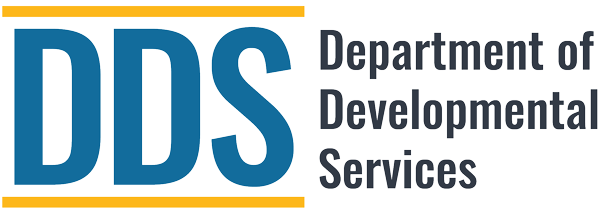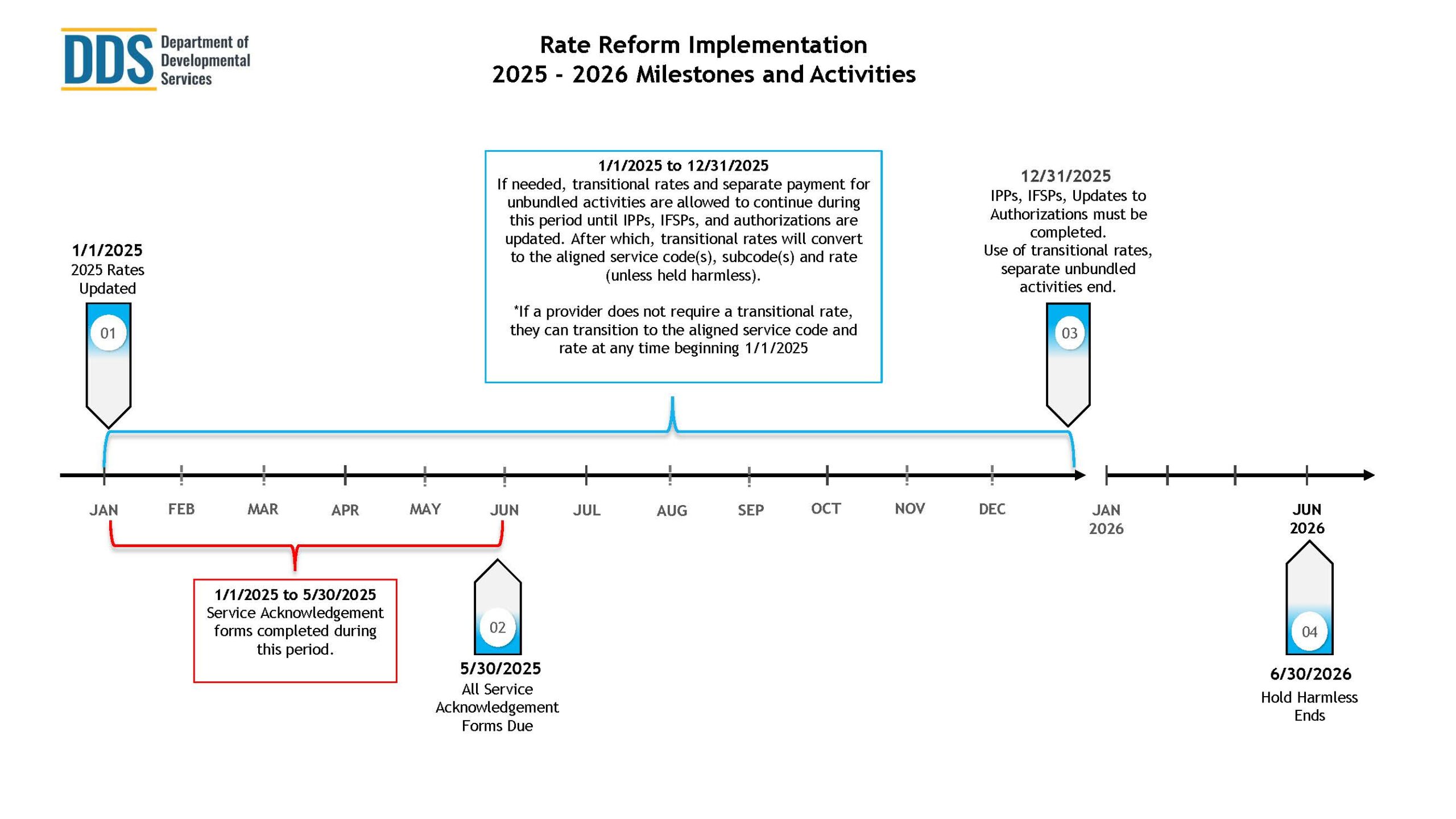This page contains answers to the most frequently asked questions regarding the Rate Model implementation process. In the coming weeks, the Department will be issuing a series of directives to provide detailed information about the updated service descriptions, requirements, and timelines for any transitions for each service category. Updated FAQs will be posted on this page on an ongoing basis.
- Rate Reform General FAQs
- Rate Reform FAQs about Employment Services
- Rate Reform FAQs for Early Start Services
- Rate Reform FAQs about ILS/SLS/PA
- Rate Reform FAQs for Adult Day Services
- Rate Reform FAQs for Adaptive Skills and Behavioral Services
- Rate Reform FAQs for Specialized Therapeutic Services
- Rate Reform FAQs for Transportation Services
- Rate Reform FAQs for Residential Services
- In-Home Respite Services
- Rate Model Implementation
- Quality Incentive Program
- Direct Care Staff Wages & Benefits Percentage by Rate Model
Last modified: June 18, 2025

